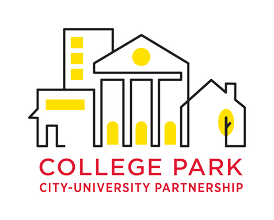What Makes a Great Place to Live?
The world is rapidly changing, and the pace is being felt in cities large and small across the country. In many places, including College Park, communities use placemaking to help build a unique, enjoyable environment which represents the community it serves. Placemaking uses urban design to center the well-being, happiness, and health of people in public spaces. It’s a philosophy as well as an outcome; not only can we create enjoyable public spaces, we should prioritize humans in urban design. As designers and community residents consider the ways in which people occupy space, placemaking is rapidly emerging as its own discipline. The question of what makes a place desirable to live, work and study is one communities grapple with regularly – How should we ensure our community meets the needs of today without losing sight of the past? How do we ensure that our communities are healthy, vibrant, attractive and inclusive for everyone? And, more generally: what makes a city a ‘great’ place? Here in College Park, there are visible and enjoyable examples of placemaking located throughout town. We are exploring opportunities to expand the positive impacts of placemaking even further.
Vision 2030: The Blueprint for College Park’s Future
In 2019, College Park embarked on a collective process to articulate a community vision for the next decade. The University-Community Vision 2030 was finalized and adopted in 2021. It offers a vision and goals to guide College Park to become a more thriving, equitable and sustainable community. In this vision, College Park is more than just a place where people live and study – it’s a place where they live fully, surrounded by opportunity and community.
Place-making: It’s an action, an approach…and a noun

Vision 2030 lays out a pathway for community stakeholders, City leaders, UMD and the Partnership to collaboratively move the needle in K-12 education, transportation, public health and safety, and attainable housing for owners, renters and students. Through concerted cross-sector effort, by 2030 College Park will have moved closer to its goals of being a growing hub of innovation, inclusivity and collaboration. It’s a bold vision we are eager to achieve.
Placemaking as a process is guided by inquiry, community participation and broad integration across multiple disciplines, such as – architecture, landscape architecture, urban design, environmental psychology, and economic development. When done well, it is context-sensitive, locally appropriate and activating. Much of the work that makes for good placemaking is cerebral – you can’t quite put your finger on it, but when it works, it works. The behind-the-scenes nature of placemaking projects can, at times, be obscured by the efforts necessary to success: policy change, technical planning, legal agreements and fundraising. It can be slow and take years to happen. The work can feel invisible and intangible. Further, there isn’t always a concrete ‘outcome’ or measure of success. At the Partnership, we believe placemaking is both process and implementation driven. Our goal is to push past the technical minutiae, so our impact is both visible and tangible. Our commitment is to ensure that College Park is truly a great place.
Advantages of Human-Centered Design
Placemaking is both a philosophy and a process aimed at transforming public spaces into engaging environments that reflect the needs and aspirations of the communities they serve.
Philosophically, placemaking emphasizes the importance of human-centered design; encouraging creativity, social interaction and a sense of belonging.
A core tenet of placemaking is community engagement. Participation by community stakeholders in the placemaking process ensures public spaces are designed for those who will use them. The goal is to create spaces that feel authentic to the local context. Great placemaking often just feels right.
Effective placemaking prioritizes adaptability, allowing spaces to evolve with the needs of the community over time. This can be as simple as adding seating, improving accessibility, or introducing interactive elements like murals or sculpture gardens.
Our goal is to push past the technical minutiae, so our impact is both visible and tangible. Our commitment is to ensure that College Park is truly a great place.
Susan Hartmann, Executive Director
In practice, placemaking goes beyond beautification—encouraging social interaction, economic vitality, and cultural expression. And when it’s done well, placemaking fosters deeper connections between people and the places they inhabit. It enriches both the physical environment and the social fabric of the community. It results in areas that are more functional, inclusive, and reflective of local culture.
Look around – College Park has great examples of placemaking! The Trolley Trail, community events and parades, City Hall Plaza, vibrant murals , and beautiful green spaces are all local examples of College Park’s placemaking underway. You can explore more of the projects in College Park in this month’s bulletin:
- The Partnership and the City have teamed up to fund a new public art installation that will be downtown
- College Park’s Public Art Murals
- The Trolley Trail connects Communities Route One Corridor
Placemaking is Vision 2030 in Action
Placemaking initiatives in College Park are concrete examples of Vision 2030 at work. These efforts not only make College Park a great place to live, work, and visit but also ensure that it continues to grow in a sustainable, equitable, and thriving manner. Through collaboration between the City, the University, the Partnership and community members, College Park is establishing exciting models for how placemaking can reflect a successful, attractive, and forward-thinking community. College Park’s journey toward becoming a great place is well underway. We’ll share our projects and initiatives along the way and share opportunities for you to get involved!
